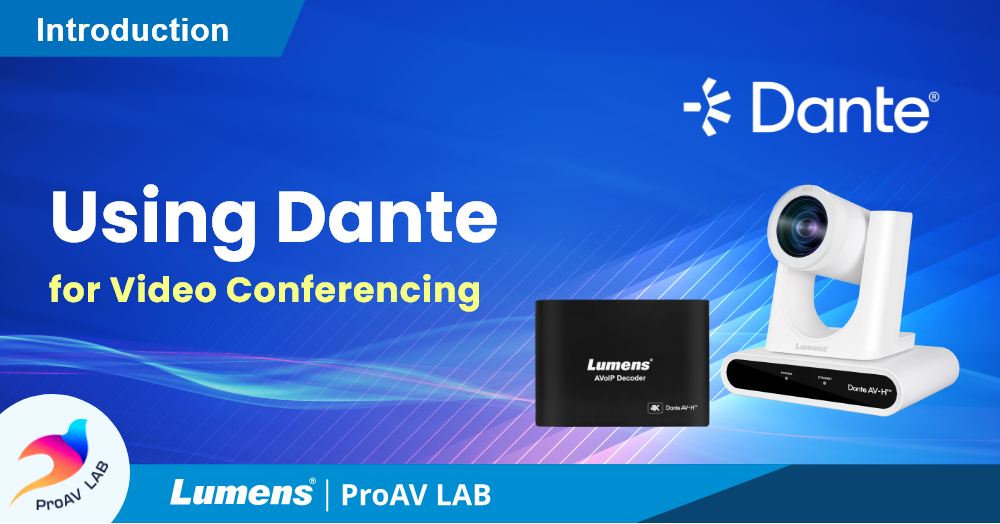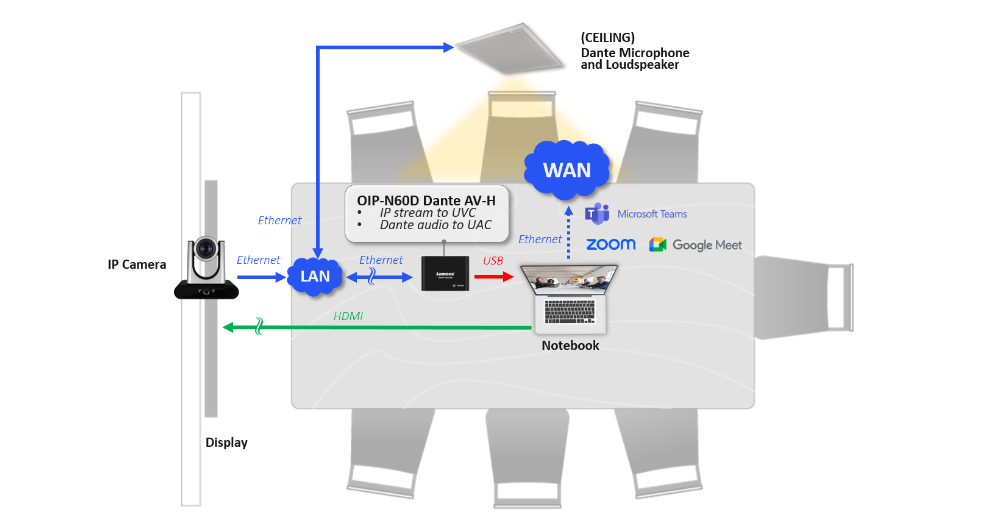Using Dante for Video Conferencing
Written by Kieron Seth, Product Marketing Director at Lumens
March 26, 2024 16778

▶ Using Dante for Video Conferencing
Much of the AV industry runs on Dante Audio. As a means of routing lossless audio across networks, it is unrivalled in its simplicity and reliability. Its immense scalability, inherent security and ability to bridge non-Dante native products into the Dante ecosystem makes it a dream for integrators and users alike.
As a result, Dante Audio is a dominant IP networking technology for live events, installed AV and unified communications systems. Core components such as the Dante Controller and Dante Domain Manager enable customers to manage audio networks of any size. These are joined by essential apps such as Dante Via and Dante Virtual Soundcard, plus third-party hardware adapters that enable non-native devices including computers and analog microphones to join the audio network.
Today's meeting rooms are built to be flexible. They allow a guest to use their own laptops to run the call, and for other attendees to share their screens during the presentation. This collaborative approach requires in-room technology that is truly plug and play, with no need for any intervention from the AV or IT team.
Where organizations employ Dante microphones, speakers and DSPs, it is easy to add Dante audio to a video conference call. Simply use an Ethernet to USB adapter to plug into the laptop for instant 2-way audio conferencing.

To complete this video conferencing set up, the user has three camera choices: they can use their laptop's internal webcam, attach a USB camera or select an IP camera visible to the laptop. There are disadvantages of each of these options:
- Laptop webcam: built-in cameras are of variable quality, and they are usually designed to capture one or two people at close range.
- USB cameras can deliver higher quality, improved viewing angles and even advanced functionality such as auto-framing. However, they are limited by the length of USB 3 cable (typically less than 3 metres) and they require the laptop to have two available USB ports (one for Dante audio, one for the USB camera).
- An IP Camera overcomes the issue of cable length and gives the installer the opportunity to install the ideal camera for the given space. However, using a virtual camera requires a level of user set up that makes it a less than ideal plug and play solution.
Lumens' new converter, the OIP-N60D Dante AV-H, brings together Dante audio with Dante video into a single USB output. The meeting organizer then simply connects to the converter and can immediately start the meeting.
The converter is a Dante device which is controlled and managed within the Dante ecosystem. It makes it easy for the AV team to route the in-room camera and in-room audio to the converter which combines the audio and video into a single UVC-compliant USB stream. This is compatible with all major conferencing platforms including Teams and Zoom and is compliant with Barco ClickShare.
The installer connects the converter to the room's the Dante audio devices (microphone, speakers etc) and a Dante-enabled PTZ cameras (such as the Lumens VC-TR60 Dante) using Audinate's apps, and the device is ready for use.
The laptop can connects with a single USB cable, allowing the meeting to benefit from the highest quality audio and video.
https://www.youtube.com/watch?v=tgDJ6Y5utZo
The OIP-N60D Dante unit has another trick up its sleeves. It has the ability to pass the audio back to the in-room microphone as a reference signal. What is the benefit of this? In huddle spaces that do not have a DSP, microphone echo can be a problem on a call. By passing the sound back to a Dante mic, certain models, such as the Yamaha RM-TT, can perform echo-cancellation internally. This enhances the audio experience without the need for investment in additional hardware.
Click here Back to Top ↑
